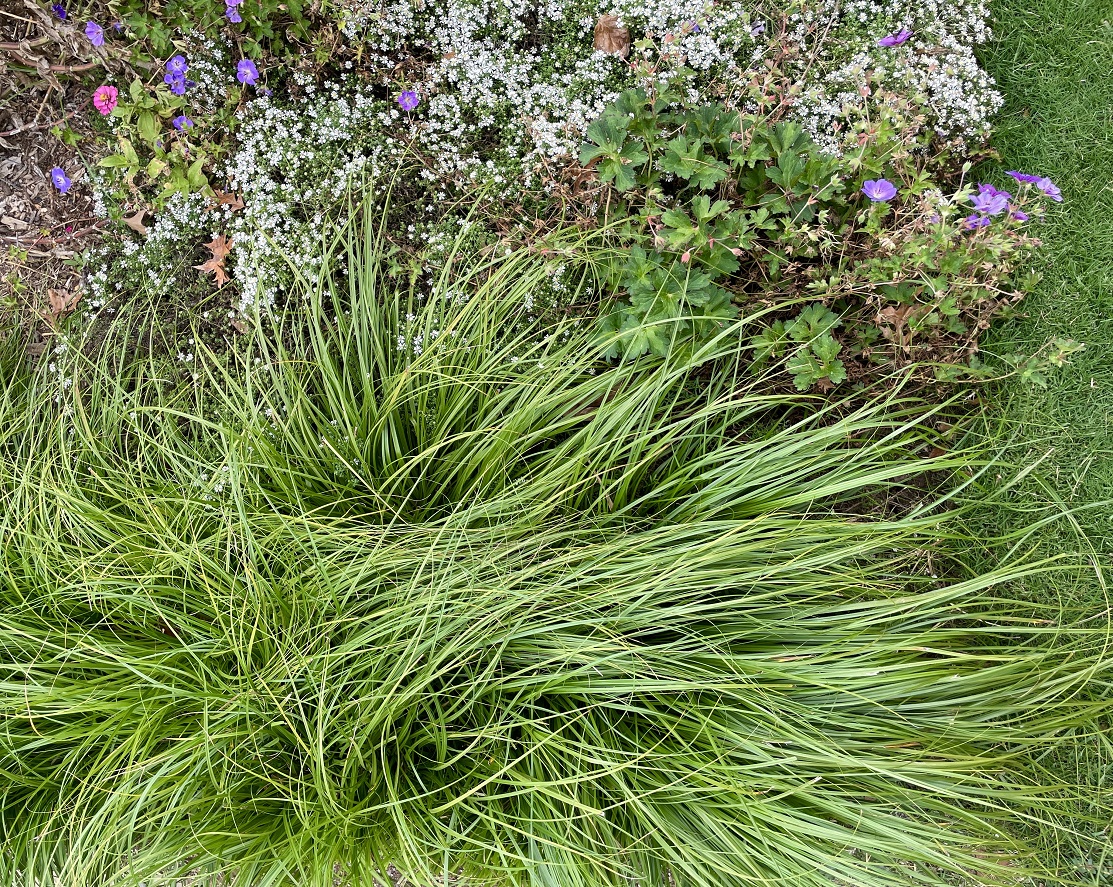
UT Gardens’ October Plant of the Month
Submitted by Holly Jones, horticulturist, UT Gardens, Knoxville
Garden styles that support biodiversity are gaining popularity. According to a 2021 survey conducted by the National Wildlife Federation and the National Gardening Association, there was a 26 percent increase in plants purchased to help wildlife from the previous year.
Instead of simply buying plants because they are pretty, gardeners are choosing plants that also fulfill ecosystem functions like providing food for foraging insects, nesting materials for birds and strong deep root systems that stabilize the soil and contribute to plant survival in harsh weather conditions. One group of plants that is gaining recognition due to this trend are the North American native sedges.
Not to be confused with the unsightly garden weed, nutsedge (Cyperus rotundus), sedges (Carex sp.) are attractive grass-like plants that primarily grow in slowly spreading clumps. While there are hundreds of native species found in the wild, only a handful of those are available on the retail market. Carex cherokeensis (Cherokee sedge) is one of those chosen few, and it is easy to see why. This handsome, tough selection thrives in an impressive range of conditions including deep shade, intense sun, occasional flooding and periods of drought once established.
Depending on the growing environment, this plant ranges in size from 1-2 feet tall and wide. The coarsely textured semi-evergreen foliage contrasts well with big, round flowers and large-leaved plants like hostas. Consider using it as an alternative lawn under trees, as a filler for large mixed borders, in a rain garden, or naturalistic meadow planting.
For a tidy appearance and a flush of fresh green growth, cut back old foliage to about 6 inches tall in late winter or early spring. Mature communities of Cherokee sedge can be found at the Native American Interpretive Garden on the UTIA campus in Knoxville as well as the perennial border surrounding the Great Lawn at UT Gardens, Knoxville.
The UT Gardens includes plant collections located in Knoxville, Crossville and Jackson, Tennessee. Designated as the official botanical garden for the State of Tennessee, the UT Gardens are part of the UT Institute of Agriculture. The Gardens’ mission is to foster appreciation, education and stewardship of plants through garden displays, educational programs and research trials. The Gardens are open during all seasons and free to the public. For more information, see the Gardens website: utia.tennessee.edu/state-botanical-garden.